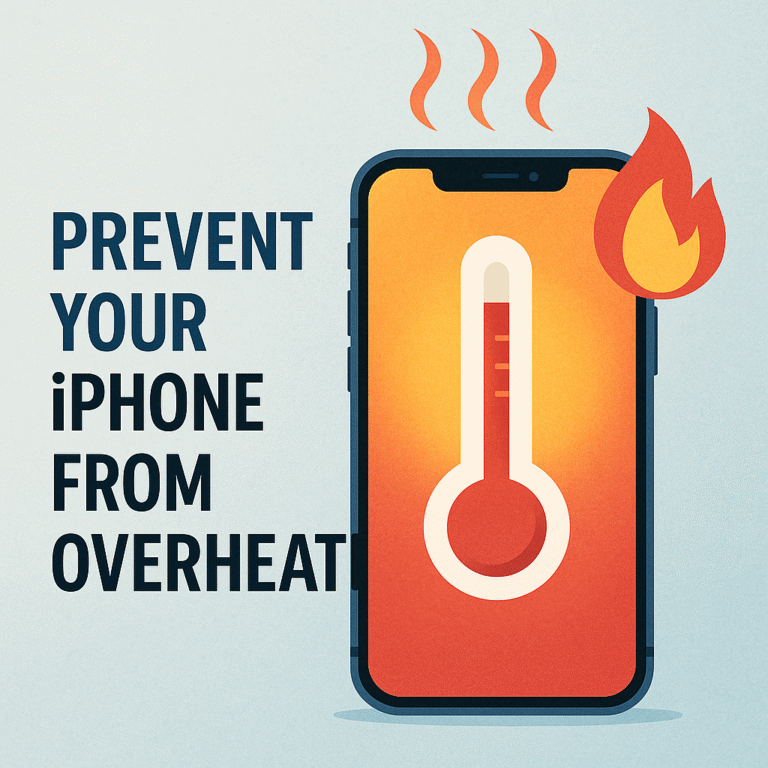To prevent your iPhone from overheating in extreme weather, here’s a comprehensive guide based on best practices:
Understanding the Risks
- Extreme Temperatures: Apple recommends keeping your device in an environment between -4º and 113º F (-20º and 45º C). Exceeding these limits can cause temporary or permanent damage.
- Direct Sunlight: Prolonged exposure to direct sunlight significantly raises your iPhone’s temperature.
- Heavy Usage: Intensive tasks like gaming, video recording, or using GPS for extended periods generate substantial heat.
- Background Processes: Apps refreshing in the background contribute to heat generation.
Prevention Strategies
- Avoid Direct Sunlight:
- Keep your iPhone in a shaded area whenever possible.
- In a car, avoid placing it on the dashboard or near windows.
- Optimize Settings and Usage:
- Reduce Screen Brightness: Lowering screen brightness reduces power consumption and heat.
- Close Unused Apps: Close apps running in the background to minimize processing load.
- Turn Off Background App Refresh: Disable background app refresh for apps that don’t require real-time updates (Settings > General > Background App Refresh).
- Limit GPS Usage: GPS is a significant power drain. Use it only when necessary.
- Avoid Heavy Tasks: Limit gaming, video recording, and other intensive tasks in hot environments.
- Airplane Mode: When in areas with poor reception, switch to Airplane Mode to prevent the phone from constantly searching for a signal, which can generate heat.
- Physical Protection and Cooling:
- Remove the Case: Cases can trap heat. Removing the case allows for better ventilation.
- Cooler or Insulated Bag: When in a car, place your phone in a cooler or insulated bag to shield it from direct heat.
- Ventilation: Ensure there’s adequate airflow around your iPhone. Don’t leave it in enclosed spaces like a glove compartment.
- Responding to Overheating:
- Warning Message: If your iPhone gets too hot, it may display a warning message.
- Turn it Off: If you receive an overheating warning, immediately turn off your iPhone.
- Move to a Cool Place: Take your iPhone to a cooler environment, away from direct sunlight.
- Allow to Cool Gradually: Let your iPhone cool down slowly. Avoid placing it in a refrigerator or freezer, as rapid temperature changes can cause condensation and damage.
- Remove the Case: Take off the case to help dissipate heat.
- Extreme Cold Precautions:
- Keep your iPhone close to your body in cold conditions to maintain a moderate temperature.
- Be aware that extreme cold can also temporarily disable certain functions.
Important Considerations
- Software Updates: Keep your iPhone’s software updated. Apple often includes thermal management improvements in iOS updates.
- Battery Health: A degraded battery can contribute to overheating. Consider replacing the battery if it’s old or showing signs of poor performance.
- Avoid Prolonged Charging: Don’t leave your iPhone charging in direct sunlight or hot environments.
in conclusion, protecting your iPhone from extreme temperatures is crucial for maintaining its performance and lifespan. By implementing preventive measures such as avoiding direct sunlight, optimizing settings, and ensuring adequate ventilation, you can minimize the risk of overheating. If your iPhone does overheat, taking prompt action by turning it off, moving it to a cooler place, and allowing it to cool gradually will help prevent potential damage. Being mindful of these guidelines will ensure your device remains functional and reliable, even in challenging weather conditions.


